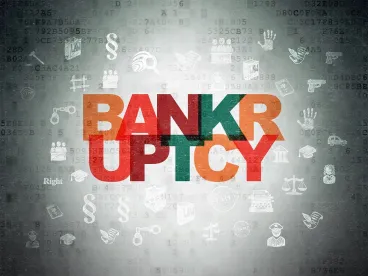Introduction
On January 14, 2020, the Supreme Court of the United States issued an opinion clarifying what constitutes a final order for purposes of bankruptcy appeal. The Ritzen decision comes a few years after the Supreme Court in Bullard v. Blue Hills Bank unanimously held that an order denying confirmation of a plan was not final because the plan process could continue notwithstanding the denial. In Ritzen Group Inc. v. Jackson Masonry LLC, the Supreme Court unanimously held that a bankruptcy court’s order denying relief from the automatic stay constitutes a final order, and thus that order may─and must─immediately be appealed if so desired. The Court’s theory was that, unlike the plan confirmation process at issue in Bullard (which allows parties to continually propose plans after denial until one is confirmed), the stay relief proceeding is its own complete procedural unit, separate and apart from any claims resolution issues. The holding regarding finality is important because parties normally only have an absolute right to appeal when an order is final, not when an order is interlocutory. Interlocutory orders may be appealed only with leave of court. Therefore, creditors must be vigilant regarding appellate deadlines and carefully assess whether their orders are final or interlocutory. At the same time, Ritzen provides an opportunity for frustrated creditors who lose a stay relief motion to seek immediate appellate review, rather than having to wait months or even years.
Facts
In Ritzen, Ritzen Group and Jackson Masonry had a land sale contract. The contract fell apart, resulting in Ritzen suing Jackson for breach of contract in Tennessee state court. Just before the trial was to begin, Jackson filed chapter 11, which triggered the automatic stay and stopped the trial. Ritzen then filed a motion under 11 U.S.C. § 362(a)(1) for relief from stay for cause to allow the trial to go forward in state court. The bankruptcy court denied stay relief and was silent regarding whether the order was made with or without prejudice. Ritzen did not appeal that denial within the 14 days required under the appellate rules. Instead, Ritzen filed a proof of claim in bankruptcy court. The bankruptcy court adversely ruled against Ritzen on the merits of the claim, finding that Ritzen, not Jackson, was the party in breach, and disallowing Ritzen’s claim.
Subsequent to the denial of Ritzen’s claim, the bankruptcy court confirmed Jackson’s chapter 11 plan. After confirmation, Ritzen appealed both the denial of the lift stay motion and the adverse ruling on its proof of claim. The district court held against Ritzen on the merits of the claims ruling and also dismissed Ritzen’s appeal of the denial of the lift stay motion as untimely. Note that the district court arguably could have held that the appeal was equitably moot, since the plan had by then been confirmed. The Sixth Circuit affirmed the district court’s ruling that the order denying relief from stay was final and thus the late appeal was properly dismissed as untimely. The Supreme Court then granted certiorari.
On appeal to the Supreme Court, Ritzen argued that the relevant procedural unit that yields a final, appealable order was the entire process of claims adjudication, from the lift stay request through the claim disallowance, not just the initial decision denying the motion to lift stay. Ritzen also argued that the order was not final because it involved the issue of bad faith filing, an issue that could be raised later in the case in other contexts. Ritzen further urged that as a policy matter the order should not be considered final because it would force parties to pursue inefficient piecemeal appeals. As discussed further below, the Supreme Court rejected Ritzen’s arguments.
Supreme Court’s Decision and Reasoning
In Ritzen, Justice Ginsburg identified the issue as whether “a creditor’s motion for relief from the automatic stay initiates a distinct proceeding terminating in a final, appealable order when the bankruptcy court rules dispositively on the motion?” The Court said “yes” and stated “we hold that the adjudication of a motion for relief from the automatic stay forms a discrete procedural unit within the embracive bankruptcy case. That unit yields a final, appealable order when the bankruptcy court unreservedly grants or denies relief.”
Essentially, the Court created a two-part test for finality. First, a court must identify the complete, unitary procedural unit, and second, the court must ask whether the order definitively and conclusively resolved that proceeding. Looking back at Bullard, the Court explained that the plan confirmation denial at issue in that case was not final because the relevant unit was the entire confirmation process. Even if the plan were denied, the process still went on because alternative plans could be proposed. Therefore, only confirmation of a plan, not denial of the plan, ended the process conclusively. Applying this logic to Ritzen, the Court concluded that the stay-relief proceeding alone was the appropriate and complete unit, and therefore a definitive order resolving that motion, whether granted or denied, was “final.” The Court noted that the stay-relief proceeding was distinct from the claims resolution process. The Court based its ruling on the many separate bankruptcy rules that govern stay relief, on the statutory listing of core proceedings in the Judicial Code, which separately list stay relief motions, and on the significant consequences of granting or denying stay relief.
The Court also considered whether the existence of a dispositive issue that still could be raised later in the case (here, bad faith) would affect the finality of the order, and concluded that it did not. The Court found that regardless of the existence of the other issue that could be raised later, the order was final as to the issue of stay relief and therefore appealable because it terminated that specific procedural unit. The Court also relied on policy considerations when making its decision. The Court noted it would be unfair and inefficient if Ritzen were allowed a second bite at the apple after the chapter 11 case was reaching near conclusion. The Court believe the immediate appeal would not cause piecemeal litigation and instead would “permit creditors to establish their rights expeditiously…, affecting the relief sought and awarded later in the bankruptcy case.”
Now What?
Ritzen is a very important decision because it gives guidance on finality. The Court noted that all stay-relief dispositive orders which grant or deny the requested relief should be treated as final when silent regarding prejudice, rather than the current practice treating a subset of some such orders as final, and others as non-final. Thus, the Court’s ruling will reach beyond the relatively uncommon basis for the application for stay relief before the Court in the instant case (to permit a lawsuit to go forward in state court) and extend to the much, much more ubiquitous applications “to repossess or liquidate collateral.” After Ritzen, in the common case where a secured creditor moves for relief from stay asking permission to repossess and foreclose on its collateral, if the bankruptcy court denies that relief the secured creditor must appeal within 14 days or be foreclosed from later appeal. At the same time, that means that the secured creditor has the immediate opportunity to obtain appellate review of the denial of its request.
However, Ritzen has left some open questions that may affect its scope going forward. The biggest open question, which the Supreme Court pointedly declined to decide, is whether an order would be final if the bankruptcy court entered it “without prejudice,” perhaps “because further developments might change the stay calculus.” This creates uncertainty regarding the finality outcome for the most common form of stay-relief motion, in which a secured creditor moves for relief from stay and asks permission to repossess and foreclose on its collateral under § 362(d)(2). A key issue in such a case is typically whether the debtor has a realistic hope of successfully reorganizing within a reasonable time, and the evidence with respect to that critical issue can change significantly as the case progresses.
If a denial without prejudice is held to not be final, the creditor would not be able to appeal immediately. This could become a real burden for the creditor, especially if their asserted basis for arguing that the debtor lacks realistic prospects of successfully reorganizing is based primarily on a legal ground (such as the creditor enjoying a blocking position on plan confirmation).
Conversely, if an order entered without prejudice in such a case is still considered final and must be appealed right away, it often would be a futile and wasteful appeal. An appeals court is unlikely to overturn a discretionary decision by the bankruptcy judge to give the debtor some time to develop a feasible plan (except in the case where the appealing secured creditor enjoys a legally decisive blocking position giving it a veto power over confirmation). Instead, a creditor might just prefer to wait and renew the lift-stay motion some months later, and in that second motion force the debtor to show the bankruptcy court what progress (if any) it has made toward formulating a feasible plan. A possible problem Ritzen raises is whether the first order must be given res judicata effect, foreclosing the creditor from bringing another stay-relief motion later in the case on the same grounds.
To circumvent this potential issue, the creditor would have to argue that the second motion is not the same as the first because the relevant dispositive underlying facts (viz., evidence of the debtor’s reorganization prospects) are different. However, whether this argument would prevail is uncertain and thus introduces risk, and indeed res judicata still might preclude a secured creditor from bringing a second lift-stay motion. Creditors do have other potential tactics to deal with the uncertainty. For example, a creditor might consider limiting its first stay motion to a request for adequate protection under § 362(d)(1) and eschew moving under subsection (d)(2) in the initial stay relief motion. The creditor would then wait to seek relief under (d)(2) until later in the case. This tactic would allow a creditor to limit its res judicata risk. However, taking this route limits other strategies such as using section 362(d)(2) to force the debtor to lay out its reorganization early in the case and then use the lack of progress in the reorganization against the debtor in a later motion.
While Ritzen provides guidance regarding the test for finality, it still leaves open the question of whether a stay relief order under § 362(d)(2) is final where a court enters the order without prejudice. Nonetheless, all parties need to be diligent regarding appellate deadlines and carefully consider how the issue of finality affects their strategies.




 />i
/>i

